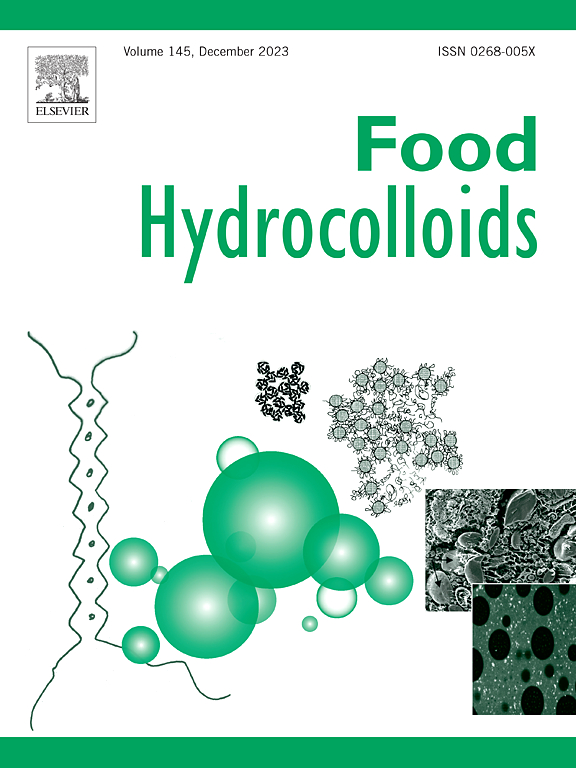Stability and tribological properties of oil-in-water emulsions stabilized with native corn starch and olive leaves phenolic extracts
IF 11
1区 农林科学
Q1 CHEMISTRY, APPLIED
引用次数: 0
Abstract
In this work, the tribological behaviour of o/w model emulsions stabilized by native corn starch particles in association with a surface-active olive leaf phenolic extract (OLE) was studied. Preliminarily, starch particles were submitted to a high-pressure homogenization pre-treatment and were then separated, by sedimentation, into small (<5 μm, centered on 2.5 μm) and large (<50 μm, centered on 17 μm) particles. Oil-in-water emulsions (10 % dispersed phase, w/v) were prepared using native corn starch particles in the presence of OLE as an emulsifier and characterized for particle size, microstructure and tribological behaviour. OLE and starch particles were both needed for system structuration, providing stability with different mechanisms. OLE triggered oil droplet formation acting as a low molecular weight emulsifier, while starch particles played a different role in the stabilization of the emulsions based on their size: the small starch particles provide stability by adsorbing onto the o/w interface, while the large particles provide stability by forming an interconnected network in the continuous phase, which embedded OLE-stabilized oil droplets. The tribological study showed that emulsions stabilized by small particles showed higher friction coefficients. In these emulsions, the stable emulsion droplets provided particle lubrication. In emulsions stabilized by large particles, lower friction coefficients were observed, which was due to the low stability of the oil droplets. The oil droplets could easily coalesce under flow, causing the formation of an oil film, which was more efficient in lowering the friction coefficient than the oil droplets stabilized with smaller particles. Such findings demonstrated that the size of starch particles played an important role in the stabilization mechanism of the emulsions as well as of their lubrication properties, and can be used to control different properties of emulsions.

求助全文
约1分钟内获得全文
求助全文
来源期刊

Food Hydrocolloids
工程技术-食品科技
CiteScore
19.90
自引率
14.00%
发文量
871
审稿时长
37 days
期刊介绍:
Food Hydrocolloids publishes original and innovative research focused on the characterization, functional properties, and applications of hydrocolloid materials used in food products. These hydrocolloids, defined as polysaccharides and proteins of commercial importance, are added to control aspects such as texture, stability, rheology, and sensory properties. The research's primary emphasis should be on the hydrocolloids themselves, with thorough descriptions of their source, nature, and physicochemical characteristics. Manuscripts are expected to clearly outline specific aims and objectives, include a fundamental discussion of research findings at the molecular level, and address the significance of the results. Studies on hydrocolloids in complex formulations should concentrate on their overall properties and mechanisms of action, while simple formulation development studies may not be considered for publication.
The main areas of interest are:
-Chemical and physicochemical characterisation
Thermal properties including glass transitions and conformational changes-
Rheological properties including viscosity, viscoelastic properties and gelation behaviour-
The influence on organoleptic properties-
Interfacial properties including stabilisation of dispersions, emulsions and foams-
Film forming properties with application to edible films and active packaging-
Encapsulation and controlled release of active compounds-
The influence on health including their role as dietary fibre-
Manipulation of hydrocolloid structure and functionality through chemical, biochemical and physical processes-
New hydrocolloids and hydrocolloid sources of commercial potential.
The Journal also publishes Review articles that provide an overview of the latest developments in topics of specific interest to researchers in this field of activity.
 求助内容:
求助内容: 应助结果提醒方式:
应助结果提醒方式:


